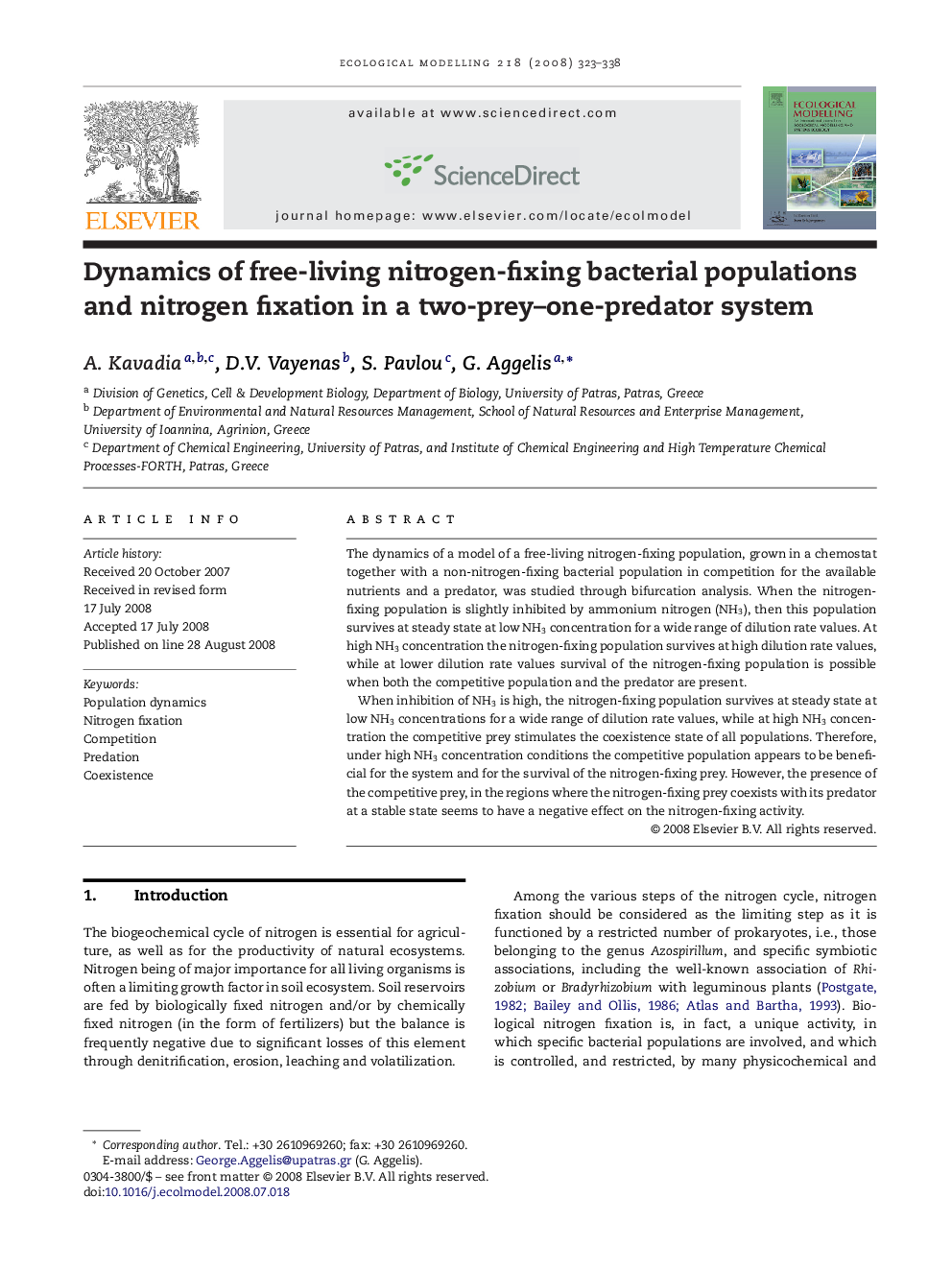| Article ID | Journal | Published Year | Pages | File Type |
|---|---|---|---|---|
| 4378437 | Ecological Modelling | 2008 | 16 Pages |
The dynamics of a model of a free-living nitrogen-fixing population, grown in a chemostat together with a non-nitrogen-fixing bacterial population in competition for the available nutrients and a predator, was studied through bifurcation analysis. When the nitrogen-fixing population is slightly inhibited by ammonium nitrogen (NH3), then this population survives at steady state at low NH3 concentration for a wide range of dilution rate values. At high NH3 concentration the nitrogen-fixing population survives at high dilution rate values, while at lower dilution rate values survival of the nitrogen-fixing population is possible when both the competitive population and the predator are present.When inhibition of NH3 is high, the nitrogen-fixing population survives at steady state at low NH3 concentrations for a wide range of dilution rate values, while at high NH3 concentration the competitive prey stimulates the coexistence state of all populations. Therefore, under high NH3 concentration conditions the competitive population appears to be beneficial for the system and for the survival of the nitrogen-fixing prey. However, the presence of the competitive prey, in the regions where the nitrogen-fixing prey coexists with its predator at a stable state seems to have a negative effect on the nitrogen-fixing activity.
